ISSN ONLINE(2319-8753)PRINT(2347-6710)
ISSN ONLINE(2319-8753)PRINT(2347-6710)
Bako Sunday1, Usman Aminu1, Paul O. Yahaya2 Mohammed B. Ndaliman3
|
| Related article at Pubmed, Scholar Google |
Visit for more related articles at International Journal of Innovative Research in Science, Engineering and Technology
A brake is a friction device for converting the power of momentum or kinetic energy of a moving vehicle into heat energy by means of friction, thereby decelerating the motion of the vehicle. The heat energy is to be dissipated rapidly in order to control brake fade and brake failure. This can be subdue on brake drums, by providing cooling fins (extended surface) on the outer surface of the brake drums. This paper presents the development and analysis of a modified brake drum model having extended surface (fins) along its circumference. The fins or extended surface are designed to improve the heat dissipation rate from the surface of the brake drums which are convectively cooled by the streams of air flowing on its outer surface. One-fourth of the overall height thickness of the original brake drum model was converted into fins. The simulation carried out on the original and the modified models, shows that the modified brake drum model has a higher circumferential strength and better heat dissipation than the original brake drum model.
Keywords |
| Brake Drum Development and Analysis. |
INTRODUCTION |
| The brakes are energy conversion system which converts the kinetic energy of a moving vehicle into thermal energy. The systems are designed to decelerate the vehicle wheels movement through friction, thereby absorbing the kinetic energy at the wheels. The drum brakes are mainly used at the rear wheels of the passengers’ cars and truck while the disc brakes are extremely used for the front bakes because of their greater directional stability. In brake drum, friction is caused by a set of shoes that presses against the inner surface of a rotating brake drum. Within the drum are shoes lined with friction material. The brake shoes moves against the inner surface of the brake drum by the action of the piston inside the wheel cylinder. The hydraulic fluid under pressure in the wheel cylinder moves the pistons which forces the brake shoes against the brake drum. The wheel cylinder and the shoes are mounted on the back plate. The brake drum is the large critical part of the braking system that rotates round the brake shoes. When the drum is heated by hard braking, the diameter of the drum increases and the brake pedal must be further depressed to obtain an effective braking action. This is known as brake fade and it has lead to drivers panic and brake failure in extreme circumstance. This paper also aimed at tackling this problem. Fins are widely used to enhance the heat transfer from a surface. The use of the fins (extended surfaces) is a thermal management technique used to augment heat transfer by increasing the available surface area and the total heat dissipation. Fins can be found in most electronics, engines, industrial equipment, and a variety of other mechanical devices. The ability of an object to reject excess heat is a required task to ensure operability, and if not accomplished sufficiently, can result in device malfunction or even failure (Dannelley 2013). Therefore, the convective removal of heat from the surface of the brake drum can substantially be improved by introducing extension (fins) on its surface. This is done in this paper, by maintaining the same weight of the two models and converting one-fourth (1/4) of the overall height thickness of the original model into extended surface (fins) on the modified and stimulating the two models to investigate the impact of forces and temperature on them. |
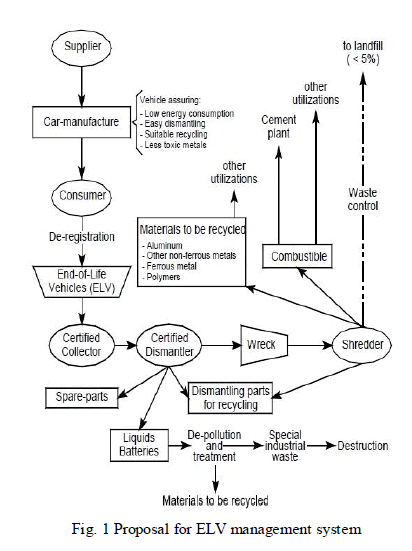 |
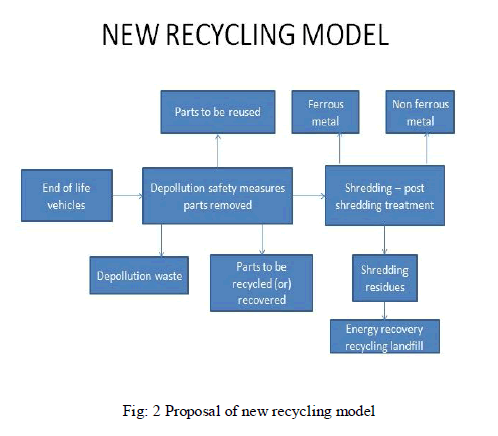 |
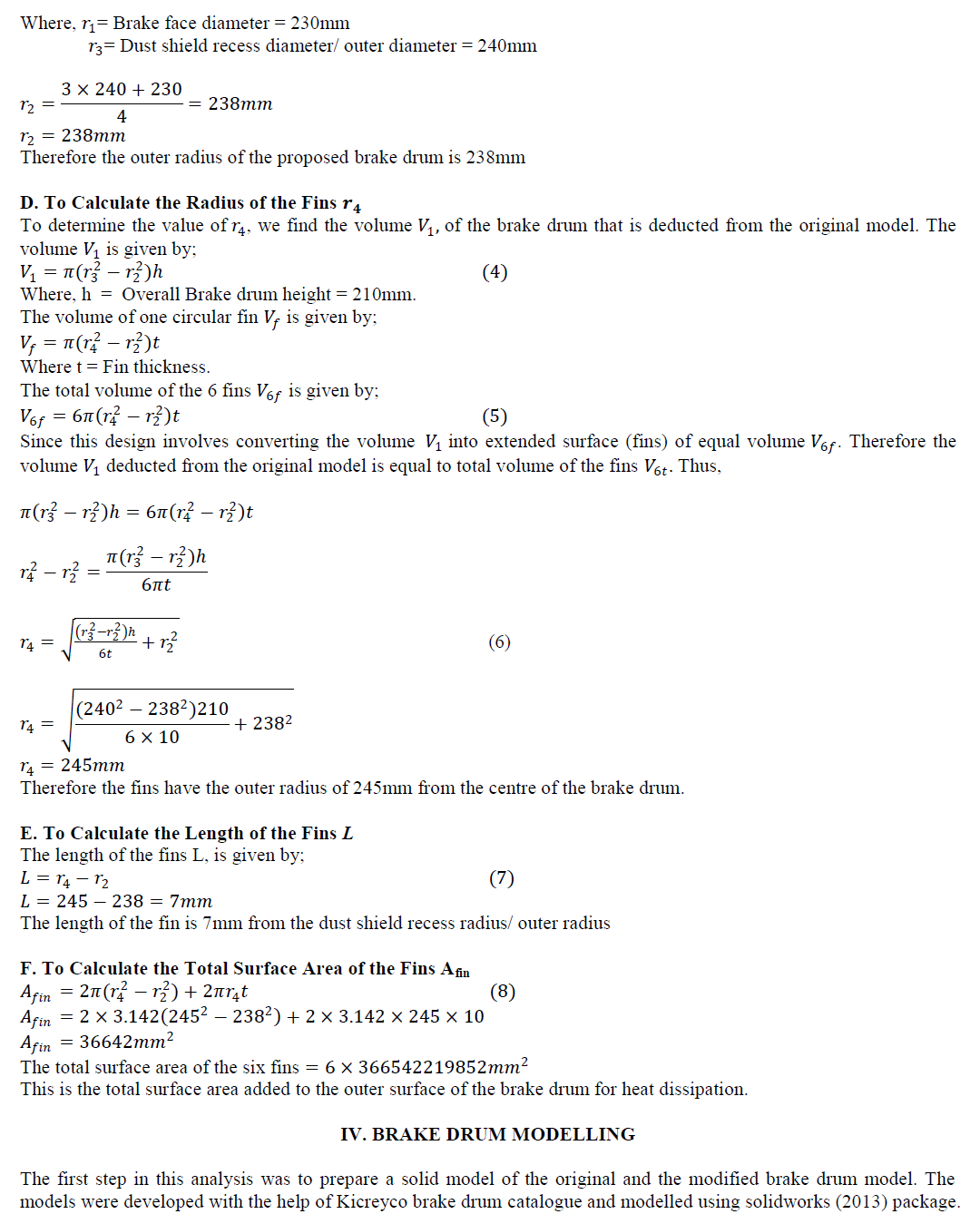 |
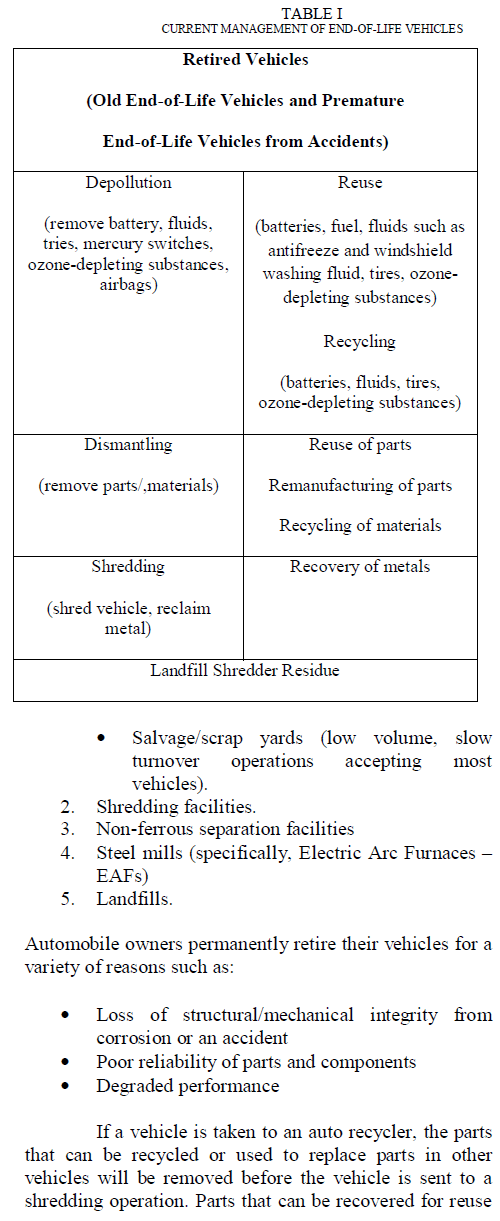 |
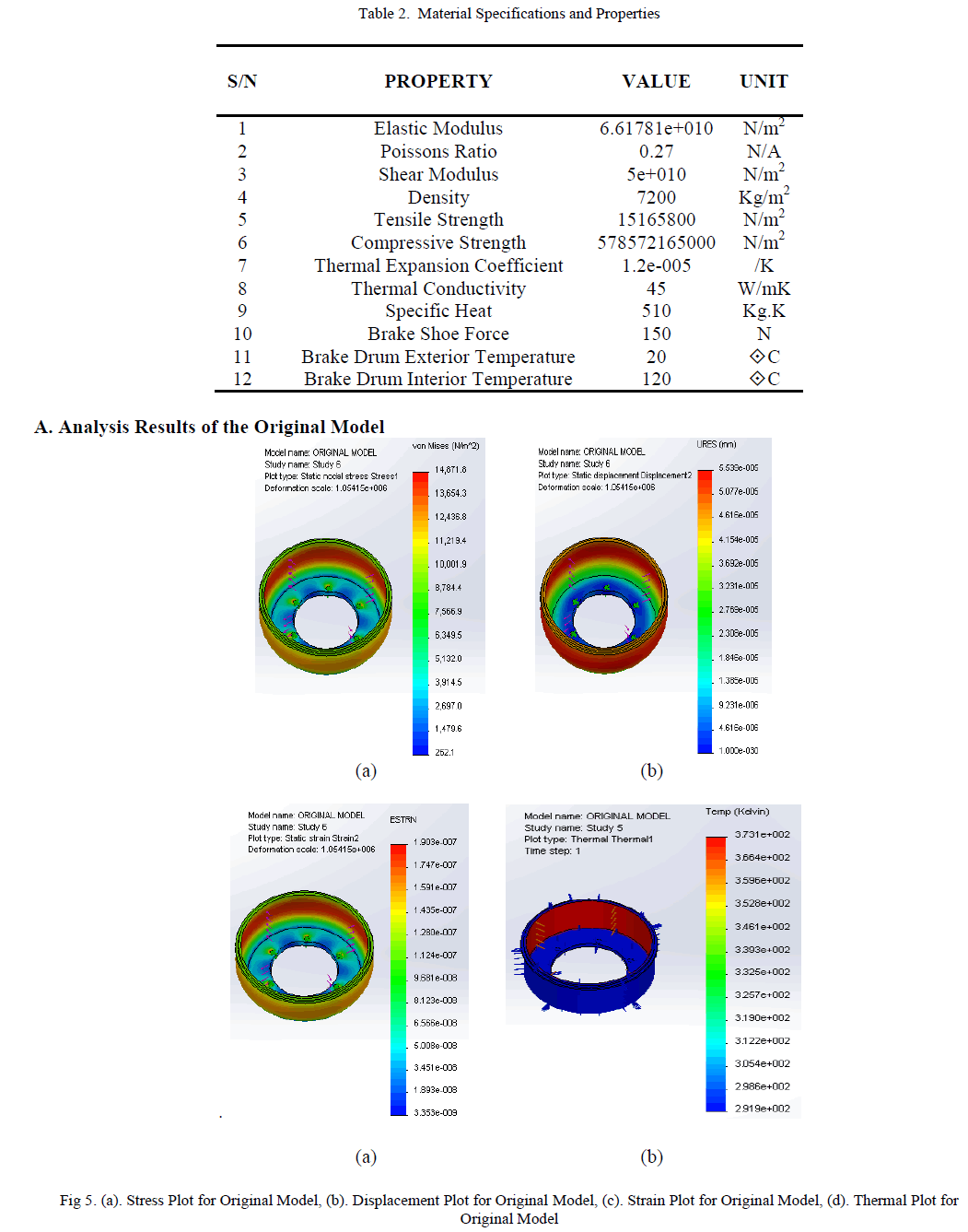 |
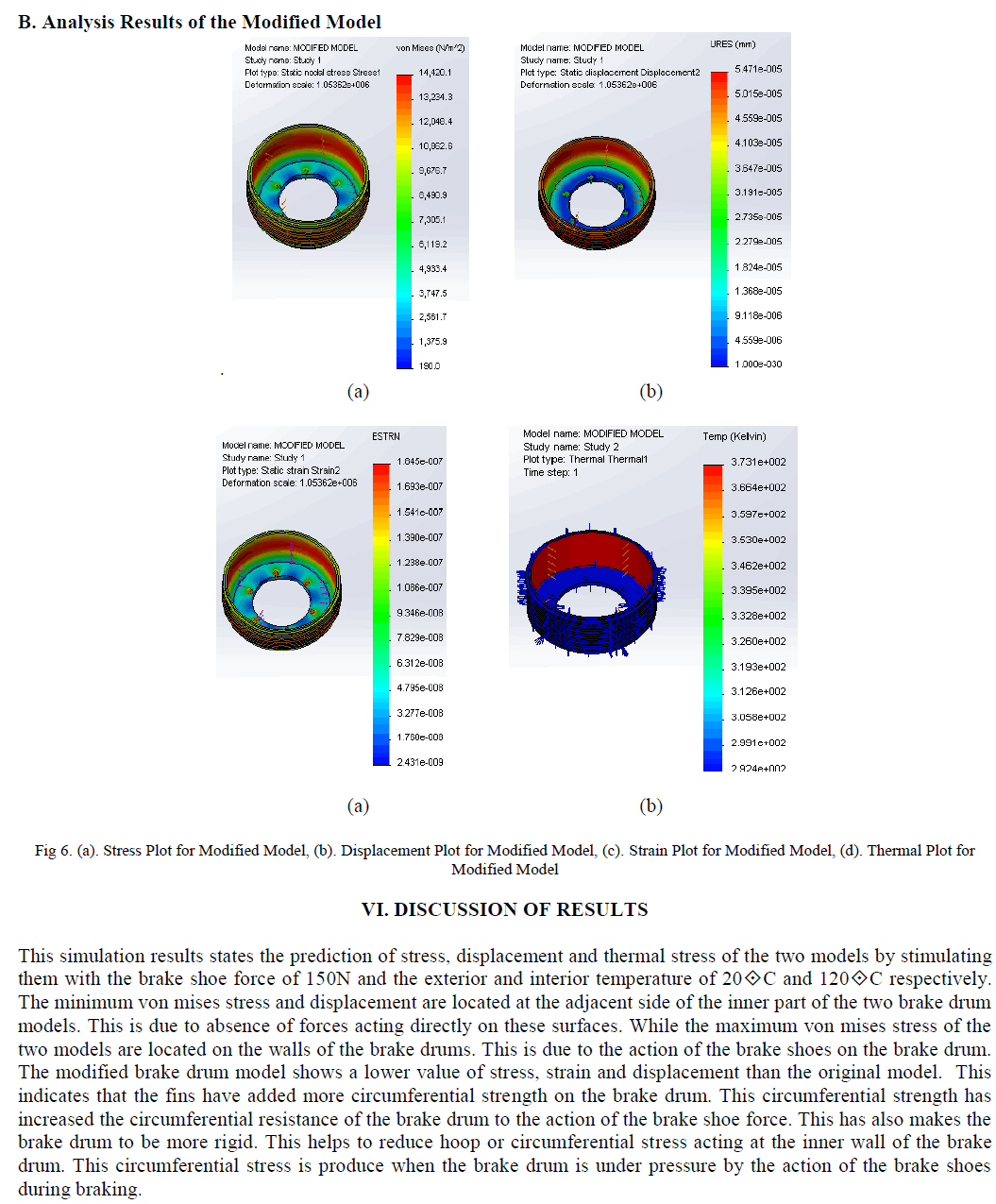 |
| It was observed from the thermal analysis, that the initial temperatures of the two models are the same, but the original model shows a lower rate of decreasing in temperature than the modified model. This indicates that the rate of heat transfer is lower in the original model than in the modified model. Therefore some amounts of heat energy are retained inside the original brake drum as the result of the low heat removal from the inner surface to the outer surface of the brake drum. This retained heat energy is the major causes of brake fade and drum brake damages in the drum brake system. |
| The higher rate of change in temperature of the modified model from the maximum to the minimum temperature shows that the modified model has a higher rate of heat transfer compared to the original model; therefore much heat is removed from the inner surface to the outer surface of the brake drum at a faster rate. Also the minimum temperature of the modified model is higher than the minimum temperature of the original model. This shows that much heat is available at the outer surface of the modified model for heat dissipation by the action of the moving air stream on the outer surface of the brake drum. This indicates that the fins (extended surface) have improved the rate of heat dissipation and conductivity from the inner surface to the outer surface of the modified brake drum. |
CONCLUSIONS |
| By comparing the simulation results of the two brake drum models, the following conclusions were drawn; |
| 1. The small von mises stress and displacement shown by the modified model; indicates that the modified model is stronger and rigid than the original model. With equal mass as the original model, the modified model has higher circumferential strength. This is due to the circumferential arrangement of the fins round the outer wall of the brake drum. Therefore the last three (2-4) properties of the brake drum (stated above) have been improved. |
| 2. The high temperature of the outer surface of the modified model shows that more heat is transferred and dissipated from the brake drum. This is enhanced by the extended surface (fins) on the surface of the brake drum. Therefore the conversion of one-fourth of the overall height thickness of the original model to fins (extended surface) has also improved the heat dissipation of the modified brake drum. |
| However, this simulation shows that the drum brakes are prone to structural and thermal failure due to hard braking force, if the detailed design and material properties are not correctly specified. This analysis can assist Automotive Engineers to design a more effective and reliable brake drums. |
References |
|